It is recommended that the flatten algorithm mode be set to Coarse.
-
Select the branch around which other branches will be arranged near the junction you want to arrange.
This branch is referred to as the fixed branch and defines the main direction.
A preview highlights the junction and shows how branches will be arranged.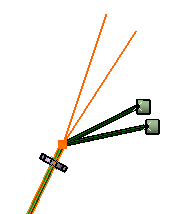
A dialog box appears letting you specify the desired angle.

-
Enter the angle in the dialog box, for example 50, then click in the geometry area to see the result in the preview.
-
Click OK when satisfied.
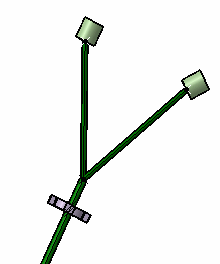
More about Umbrella-like Patterns
The solution you obtain will be slightly different depending on whether the junction:
- Is formed by bundle segment ends
Or, - Is built on a branch point.
Junction Formed by Bundle Segment Ends
Branches are arranged at the specified angle around the fixed branch which defines the main direction:
- If there is an odd number of branches (excluding the fixed branch),
then the middle branch is positioned at an angle of 180° with respect to the fixed branch and other
branches are positioned at the specified umbrella angle on either side of
the main direction.
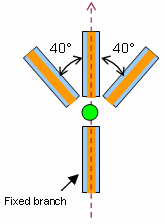
- If there is an even number of branches (excluding the fixed branch), no
branch is aligned with the fixed branch and the two middle branches are
positioned at half the umbrella angle on either side of the main direction.
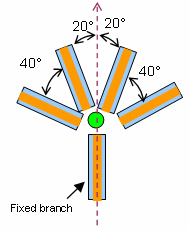
Junction Built on a Branch Point
- If the fixed branch is the branch containing
the branch point, and the non-selected bundle segment of this branch is the
middle bundle segment, then the two bundle segments of this branch will
be positioned at an angle of 180° and other branches are positioned at
the specified umbrella angle on either side of the main direction.
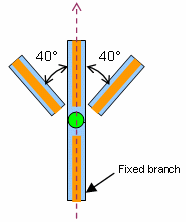
- If the fixed branch is the branch containing
the branch point, and the non-selected bundle segment of this branch is not
the middle bundle segment, the branch containing the branch point is
split into two at the branch point. A message informs the user who must
confirm the action. The junction is then arranged like a
junction formed by bundle segment ends.
- If the fixed branch is not the branch containing the branch point , the branch containing the branch point is split into two at the branch point. A message informs the user who must confirm the action. The junction is then arranged like a junction formed by bundle segment ends.
Note: The branch containing the branch point cannot be split if wrapped by a protective covering.